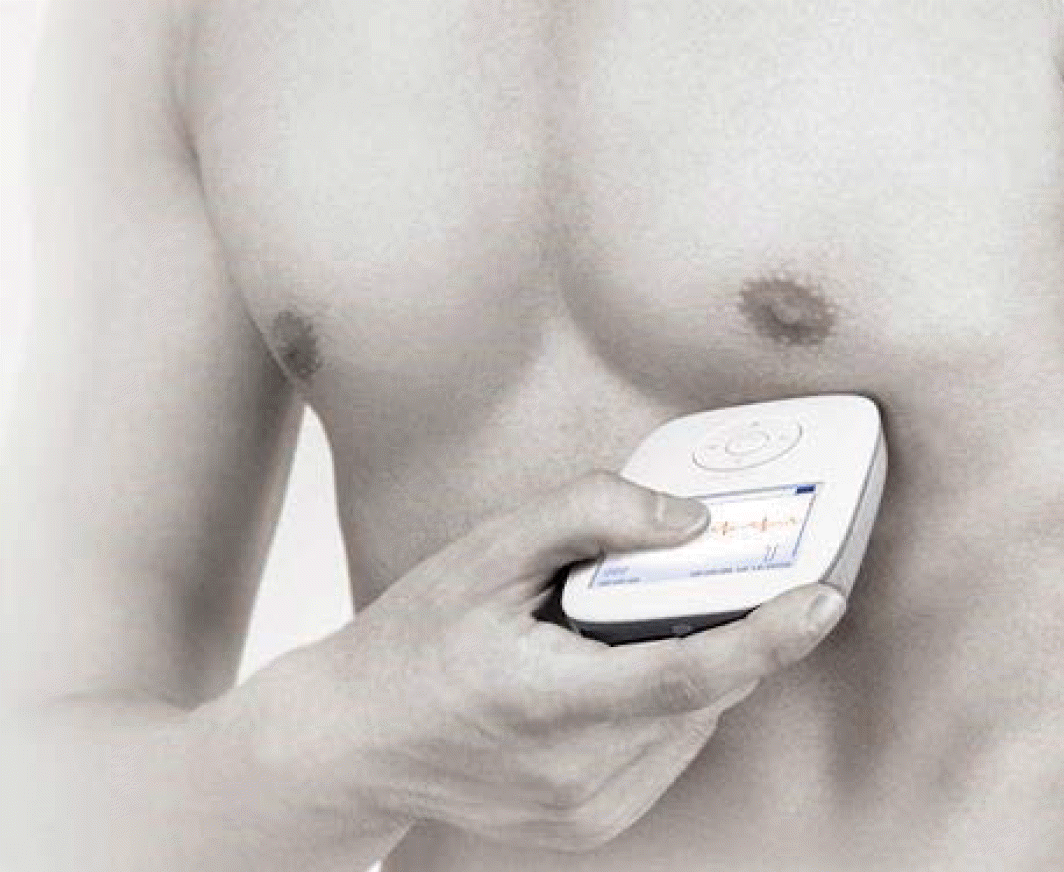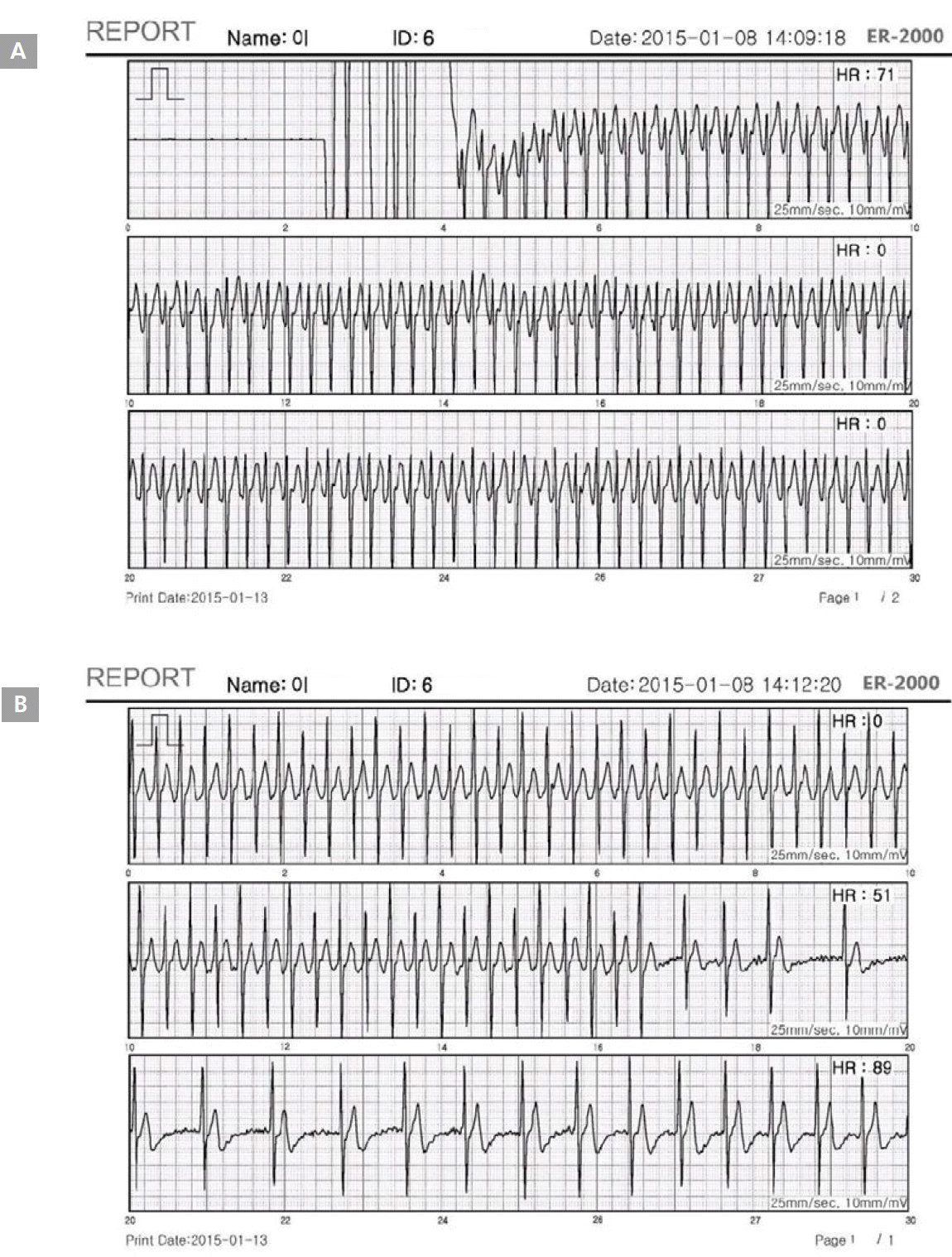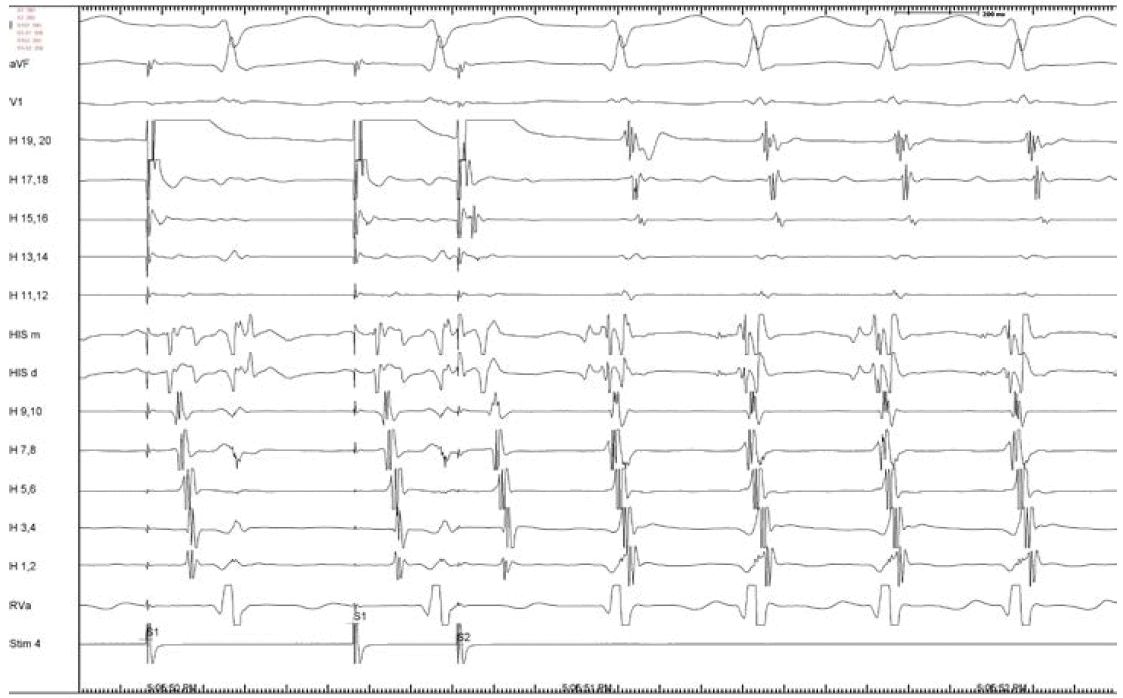Introduction
The Holter monitor has been established as an effective, noninvasive diagnostic tool in the cardiology field [1], and is especially important for assessing suspected cases of cardiac arrhythmia. Therefore, when a patient complains of paroxysmal palpitation, Holter monitoring is usually prescribed. However, Holter monitoring is usually implemented for 24 hours. Although some arrhythmias can be detected within 24 hours, others may not manifest within that duration [2].
Recording systems that collect data for a longer period, such as loop recorders, have been used for the evaluation of irregular palpitations. However, this approach requires an invasive procedure, creates a scar, and often results in missed specific diagnoses.
Patient-activated “event recorders” have been proposed as a useful alternative to these other devices in the outpatient setting, and are more cost-effective than conventional 24-hour Holter electrocardiography (ECG) monitoring [2]. We present a case of paroxysmal supraventricular tachycardia (PSVT) that was diagnosed after the use of a patient-activated event recording system.
Case
A 17-year-old male patient presented with intermittent palpitations that had persisted for 2 years. He had previously undergone evaluation with a Holter monitor, but the cause of his palpitations could not been identified. His palpitations appeared when he was resting, and had a sudden onset. The maximum duration of the palpitations was 3 minutes, and they occurred approximately twice a week. When the patient was treated in our outpatient clinic, his ECG showed a sinus rhythm of 83 beats per minute, and his blood pressure was 100/60 mmHg.
A patient-activated event recording system (Boryung Soo & Soo ER-2000, Seoul, Korea, Figure 1) was prescribed for the evaluation of his palpitations. We believed that a 24-hour Holter monitor assessment was not sufficient for evaluating infrequent palpitations. After the patient was provided simple instructions on how to use the recording system, he was discharged to home.
After 2 weeks, he returned to our clinic. When he had felt palpitations at home, he activated the event recording system. The system indicated narrow QRS complex tachycardia, with a recording of 210 beats per minute (Figure 2A). His sinus rhythm was regular. After 3 minutes and 16 seconds, tachycardia terminated spontaneously (Figure 2B).
An electrophysiology study was performed, and a typical (slow-fast) atrioventricular nodal reentrant tachycardia (AVNRT) was induced during the stimulation test (Figure 3). Radiofrequency catheter ablation of the slow pathway was indicated. After ablation, neither AH jump nor AVNRT was induced.
Discussion
In the present report, we describe a simple case of paroxysmal supraventricular tachycardia that was diagnosed after using a patient-activated event recording system. A private outpatient clinic may often not have Holter monitors available because they are expensive, the results are difficult to interpret, and they may be ineffective for detecting infrequent arrhythmias. However, the patient-activated event recording system is a more cost-effective diagnostic tool, and can be used without difficulty to evaluate irregular arrhythmias.
de Asmundis et al. [3] reported that Holter monitoring was capable of detecting clinical cardiac arrhythmia in 1.8% of patients, whereas a patient-activated event recording system identified arrhythmia in 89% of patients. These data indicate that a patient-activated system can provide useful diagnostic information on patients with irregular palpitations due to arrhythmias.
Thus, we observed that a patient-activated recording system might be preferable to Holter monitoring for patients presenting with infrequent, transient palpitations. The easy operation and cost-effectiveness of these devices will encourage physicians in outpatient clinics to consider them for their patients.
















